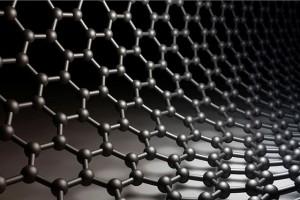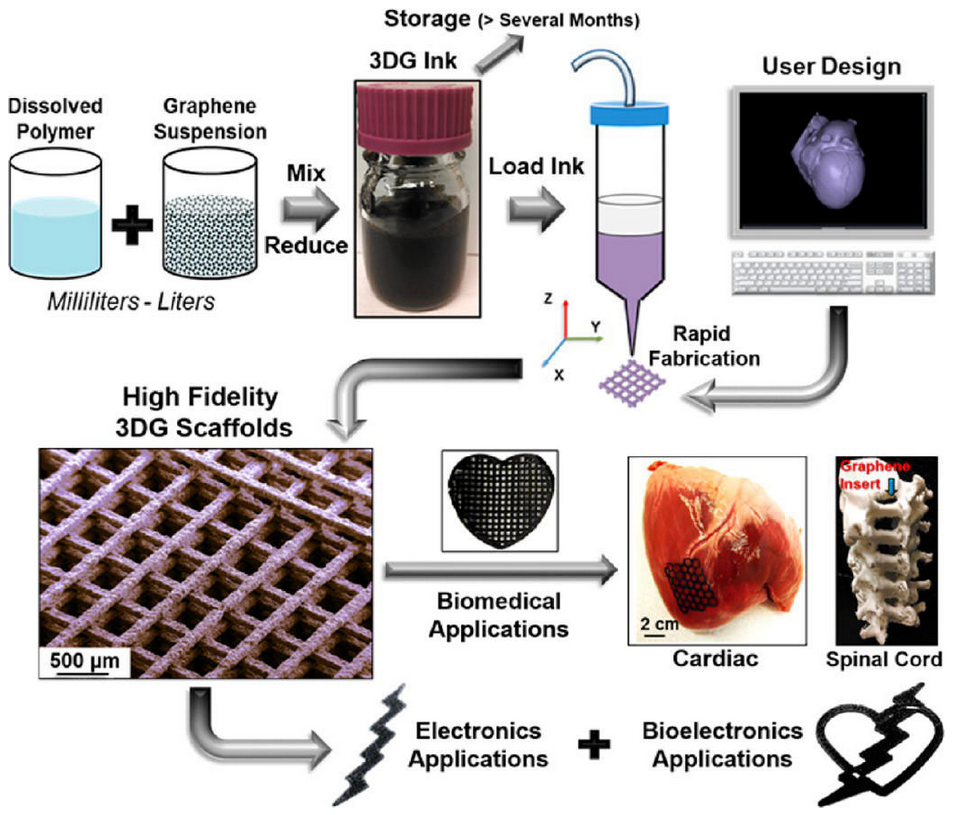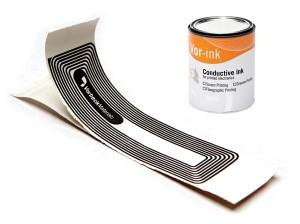 The physics researchers who discovered graphene said, while they were picking up their Nobel Prize, that its discovery would change the world. Graphene is not the first discovery said to be world changing, nor will it be the last. But it is one of the few that looks to be coming very close to living up to its discoverers’ promise.
The physics researchers who discovered graphene said, while they were picking up their Nobel Prize, that its discovery would change the world. Graphene is not the first discovery said to be world changing, nor will it be the last. But it is one of the few that looks to be coming very close to living up to its discoverers’ promise.
Structurally, graphene is just a single atom thick sheet of carbon strung together. But that structure gives it an impressive amount of strength and versatility that is unmatched by any other known material. As preposterous as it sounds, graphene requires more than 100 times the amount of force to break than it would take to break the same thickness of steel. And it does that while being incredibly flexible and can even stretch or fold without breaking or weakening. Additionally, even at a single atom thickness, it is an excellent conductor of electricity, and possibly even information. You can imagine how useful those properties would be to an incalculable number of industries, including those looking to miniaturize electronics or data transmission technology.
If all of that sounds miraculous to you and you’re wondering when we will see these amazing new technological advances, there is a catch. Currently it isn’t cheap to manufacture graphene, and researchers have only managed to create ribbons of the material a few centimeters in length. But this isn’t one of those problems that won’t be solved, it’s simply one of those problems that the really smart people who figure out stuff like this haven’t completely solved yet.
However, researchers from Northwestern University have developed a 3D printable solution-based graphene ink material that can be formed into biocompatible scaffolding structures. These structures can range in diameter from 100 to 1000 micrometers, are biocompatible, will conduct electrical impulses, and maintain the structural integrity of the graphene material. The material is easy to 3D print and can be used to print electronic devices and implantable biosensors, and even help print body parts and organs.
“From a 3D printing perspective, graphene has been previously incorporated into 3D printed materials, but most of these constructs comprise no greater than about 20 volume % of the total solid of the composite, resulting in electrical properties that are significantly less than what we describe in our recent work. Our resulting 3D printed constructs contains majority graphene while maintaining structural integrity and handleability, which is enabled by the particular biocompatible elastomer binder – PLG – that we chose in combination with the solvent system,” Northwestern University Assistant Professor, Materials Science and Engineering Ramille N. Shah explained to Nanowerk.
 Essentially this ink-based graphene material can help produce biomaterials that could help regrow or replace damaged nervous tissue, cardiac musculature, and even living skeletal tissue. The inkjet 3D printing technique would allow constructs to be easily customizable and patient-specific. The structures may also encourage the growth of adult stem cells without the need for external stimulation or encouragement, essentially opening the way to bioengineer new, living tissue.
Essentially this ink-based graphene material can help produce biomaterials that could help regrow or replace damaged nervous tissue, cardiac musculature, and even living skeletal tissue. The inkjet 3D printing technique would allow constructs to be easily customizable and patient-specific. The structures may also encourage the growth of adult stem cells without the need for external stimulation or encouragement, essentially opening the way to bioengineer new, living tissue.
Because the material is safe for the human body it could also be used to create implantable biosensors to monitor delicate medical issues. There is also the possibility of implantable electronic devices and biodegradable consumer products. This list of potential uses for this type of technology is almost implausibly long and yet everything that researchers are discovering is proving to be true. We just need those smart folks to smart us up a way to make more of the stuff.
What do you think–is graphene the next step in medical and electronics advancement, or is it just the latest in a series of over-hyped scientific advancements? Let us know what you think on our Graphene Inks forum thread at 3DPB.com.
Subscribe to Our Email Newsletter
Stay up-to-date on all the latest news from the 3D printing industry and receive information and offers from third party vendors.
You May Also Like
Gorilla Sports GE’s First 3D Printed Titanium Cast
How do you help a gorilla with a broken arm? Sounds like the start of a bad joke a zookeeper might tell, but it’s an actual dilemma recently faced by...
Nylon 3D Printed Parts Made More Functional with Coatings & Colors
Parts 3D printed from polyamide (PA, Nylon) 12 using powder bed fusion (PBF) are a mainstay in the additive manufacturing (AM) industry. While post-finishing processes have improved the porosity of...
$25M to Back Sintavia’s Largest Expansion of Metal 3D Printing Capacity Since 2019
Sintavia, the digital manufacturing company specializing in mission-critical parts for strategic sectors, announced a $25 million investment to increase its production capacity, the largest expansion to its operations since 2019....
Velo3D Initiates Public Offering in a Bid to Strengthen Financial Foundations and Drive Future Growth
Velo3D (NYSE: VLD) has been among a number of publicly traded 3D printing firms that have attempted to weather the current macroeconomic climate. After posting a challenging financial report for 2023,...
































